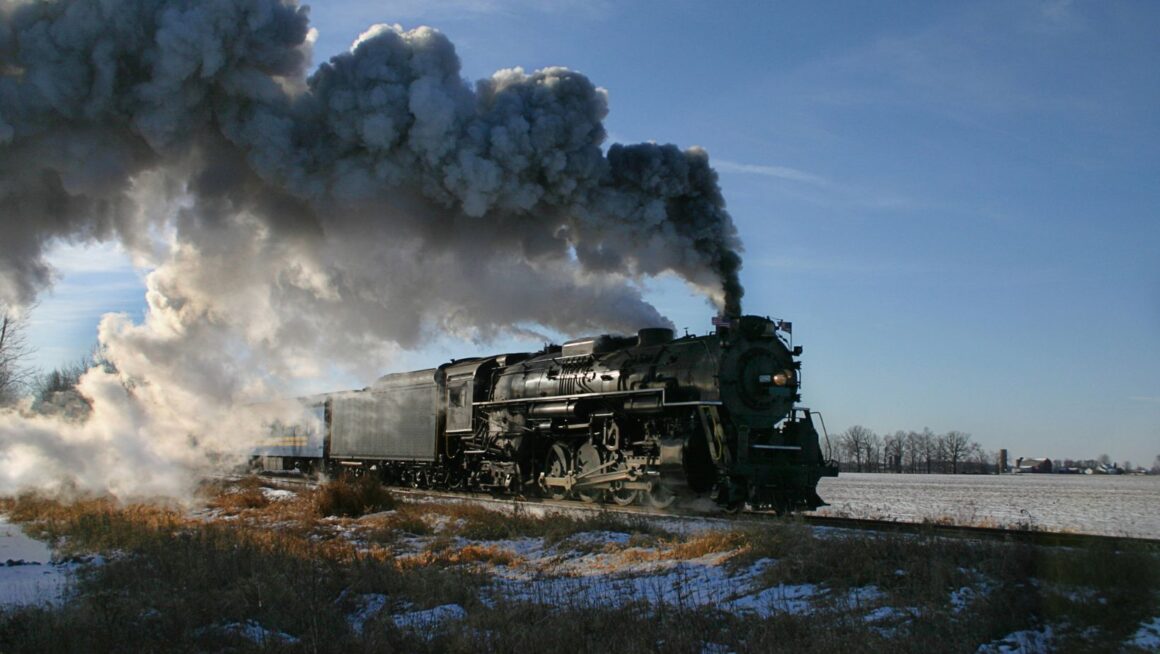Table of Contents
How Would Life Have Been Different in the 1800s of the Steam Locomotive Had Not Been Invented?
Imagine a world without the iconic steam locomotive, chugging along the tracks and revolutionizing transportation in the 1800s. The impact of this invention cannot be overstated, as it transformed not only the way people traveled, but also the course of history itself. In this article, we will explore the fascinating question of how life would have been different if the steam locomotive had never been invented.
From the Industrial Revolution to the expansion of trade and the development of new cities, the absence of this remarkable invention would have had far-reaching consequences. Join me as we delve into this alternate reality and uncover the profound changes that would have shaped the 1800s.
The Industrial Revolution: Without the Locomotive
During the 1800s, the steam locomotive played a pivotal role in fueling the Industrial Revolution. Without this revolutionary invention, the course of history and the advancements of that century would have been drastically altered. Let’s explore how life in the 1800s would have been different if the steam locomotive had not been invented.
Limited Transportation Infrastructure
Without the locomotive, transportation of goods and raw materials would have been a major challenge. The Industrial Revolution relied heavily on the efficient movement of resources to fuel the growing factories and industries. With no steam locomotives to transport goods over long distances, the industrial expansion would have been severely limited.
Slow and Inefficient Trade
In the absence of the steam locomotive, trade between cities and regions would have been sluggish and inefficient. The locomotive not only allowed for faster transportation of goods but also connected previously isolated areas. The steam locomotive facilitated the growth of trade networks, enabling the exchange of goods on a much larger scale.
Delayed Urbanization
The steam locomotive played a significant role in the expansion of cities and the development of new urban centers. Without this mode of transportation, the process of urbanization would have been delayed. The ability to transport people and goods quickly and efficiently made it easier for industries to thrive and for cities to grow.
Limited Accessibility to Resources and Markets
The steam locomotive revolutionized access to resources and markets. It enabled industries to tap into distant sources of raw materials and opened up new markets for their products. Without the locomotive, these resources would have been more difficult to access, hindering the growth and advancement of industries.
The absence of the steam locomotive in the 1800s would have had far-reaching consequences. It would have limited transportation infrastructure, hindered trade, delayed urbanization, and restricted access to resources and markets. The steam locomotive’s role in the Industrial Revolution cannot be overstated, as it laid the foundation for the rapid industrialization and progress seen in the 19th century.

Transportation and Trade without the Steam Locomotive
Without the invention of the steam locomotive in the 1800s, transportation and trade would have faced significant challenges. The steam locomotive revolutionized the movement of goods and people, transforming the way society functioned at that time. Let’s explore how life in the 1800s would have been different without this groundbreaking invention.
Trade would have been slow and inefficient: The steam locomotive allowed for faster transportation of goods over long distances. Before its invention, trade relied heavily on slow and unreliable methods such as horse-drawn wagons and ships. By enabling the movement of goods at a much faster pace, the steam locomotive facilitated efficient trade, enabling businesses to grow and prosper. Without it, trade routes would have been limited, hindering economic development.
Urbanization would have been delayed: The steam locomotive played a vital role in the growth of cities during the Industrial Revolution. With the ability to transport large numbers of people quickly and efficiently, it encouraged migration from rural areas to urban centers. Without the steam locomotive, urbanization would have been delayed, limiting the concentration of workers and impeding the rapid development of industries that happened during this time.
Access to resources and markets would have been limited: The steam locomotive provided a means to transport raw materials from distant locations to factories. This increased access to resources, allowing industries to flourish by obtaining essential materials more easily. Additionally, it opened up new markets for businesses, as goods could be transported to consumers across vast distances. Without the steam locomotive, access to resources and markets would have been limited, resulting in the slower growth of industries and hindering economic progress.
Inefficient transportation systems: Before the steam locomotive, transportation relied heavily on slower modes such as horse-drawn carriages, canals, and ships. These methods were not only time-consuming but also dependent on favorable weather conditions. The introduction of the steam locomotive revolutionized transportation, providing a reliable and efficient means of moving people and goods. Without it, transportation systems would have remained slow, unreliable, and susceptible to the whims of nature.





